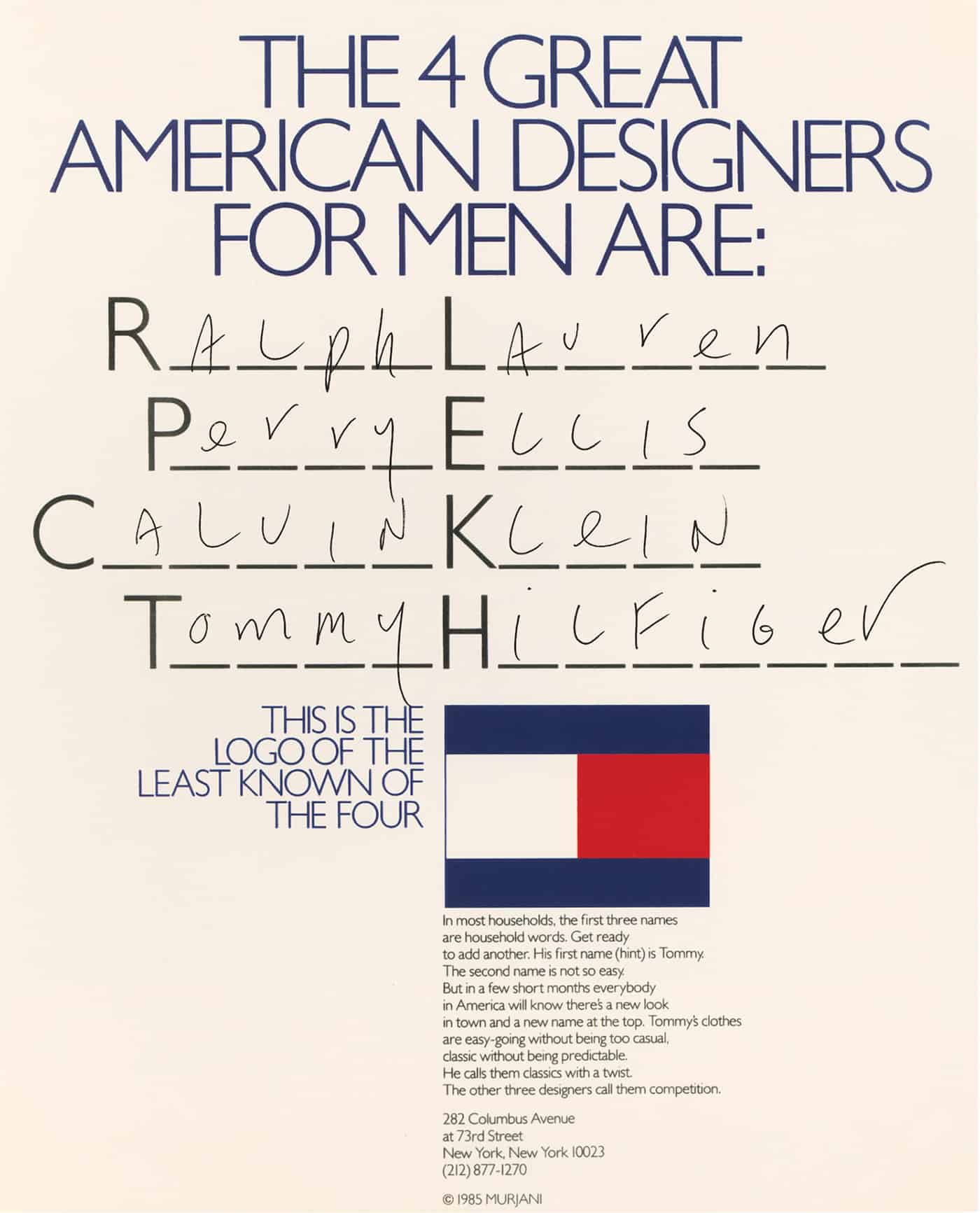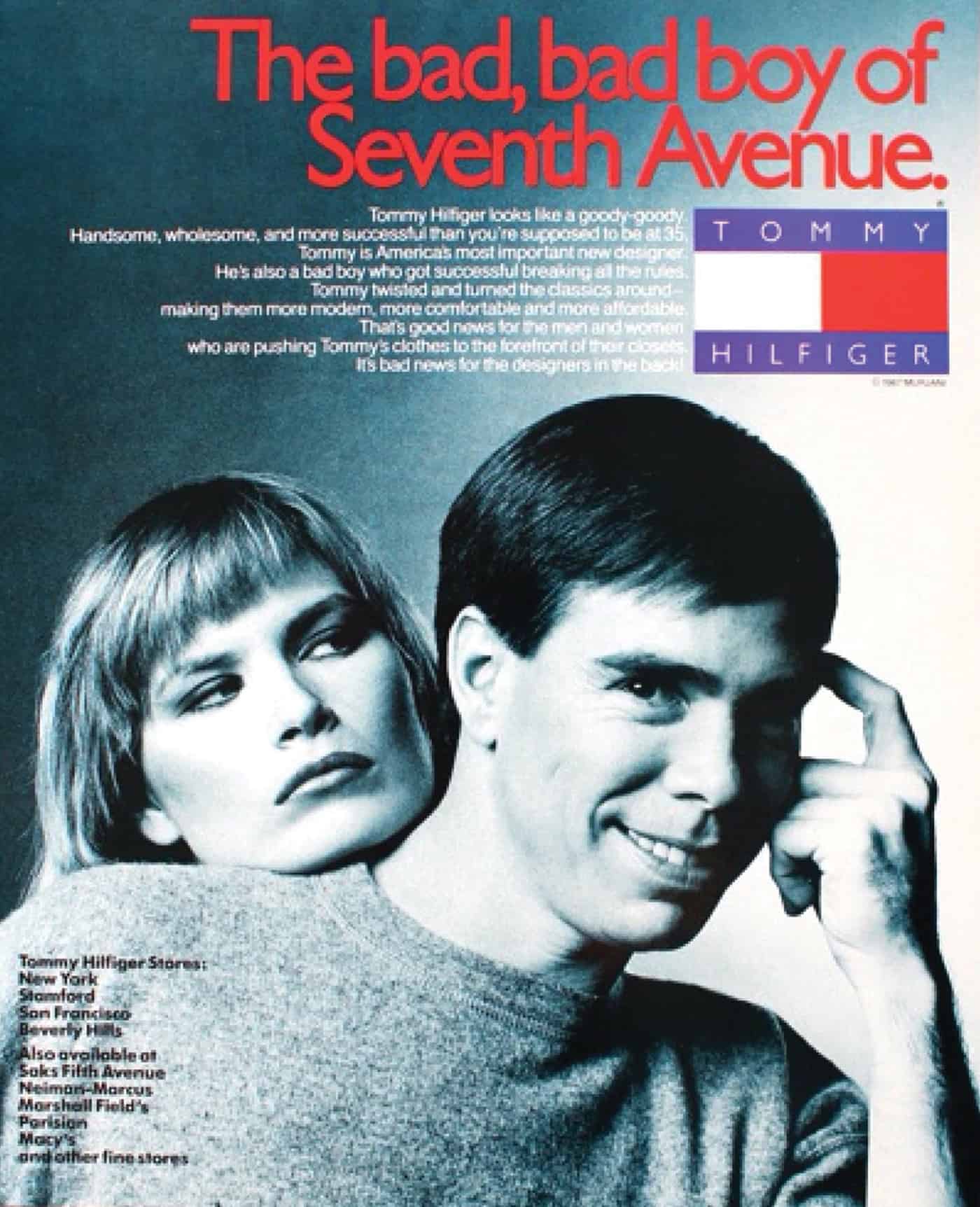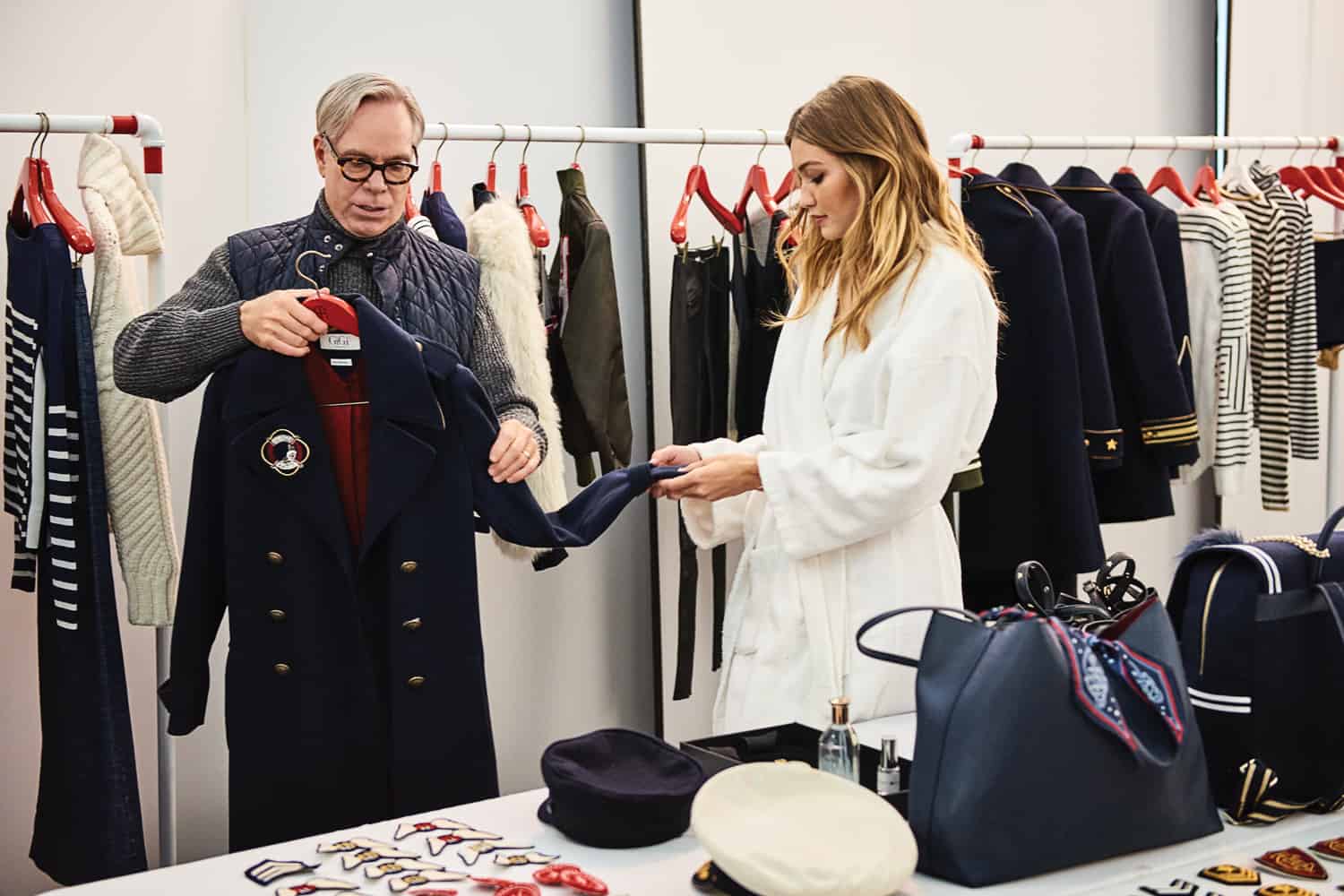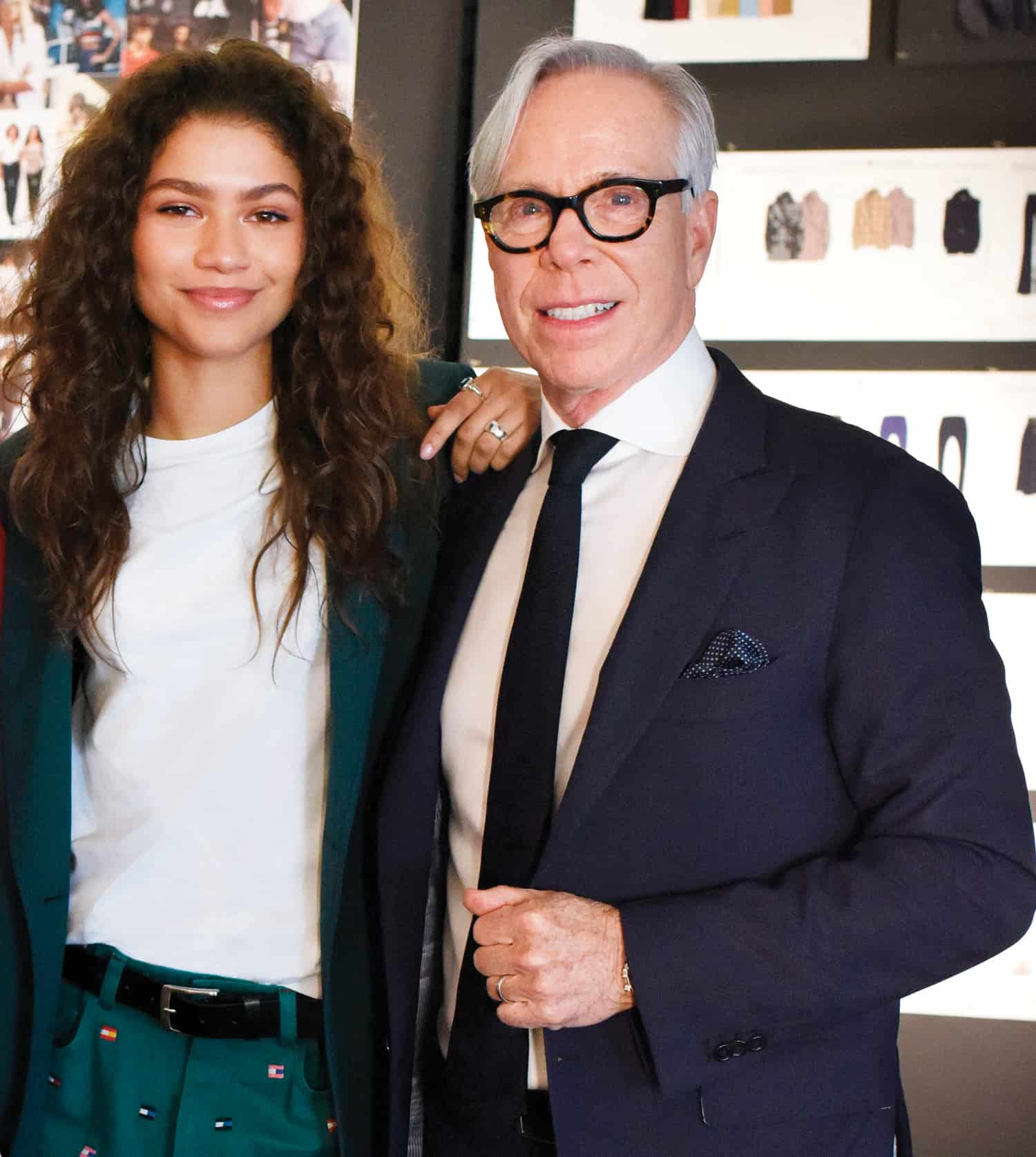Anyone who has ever crossed paths with Tommy Hilfiger can’t help but love the guy. You almost forget that this kind and rare gentlemen is one of the great disrupters in American fashion—a true pioneer, a designer who has always known how to reset the brand and keep it youthful. This year, he celebrates (ready for this?) 35 years in business, so we thought it was the perfect time to look back on some of the company’s many milestones with the man himself.
Let’s go down memory lane! What comes to mind when you pause to think that the brand is 35?
It seems like it went by much too quickly. In looking back, it’s kind of exciting to think that dreams do come true. When I was starting out, I was dreaming of being a global brand. In the very, very beginning, we were an American brand in America. When we went to Europe and Asia, I saw incredible opportunity, which has served us very well. When we positioned the brand as a premium brand that was accessible to everyone, I didn’t think it would become such an important statement 35 years down the road. Now more than ever, being that global, lifestyle accessible brand is the sweet spot, the perfect position for us to be in.
Tell us a little bit about how it all began with People’s Place. What was that?
When I was a teenager, my friends and I were going to concerts a lot. We loved rock music—the Rolling Stones, the Beatles, Jimi Hendrix, Janis Joplin, all the Woodstock favorites, and all the cool rock bands that were just surfacing. I wanted to be a musician, but I wasn’t a good singer or guitar player. But I wanted to look like the musicians. My friends started dressing like rock stars, and everyone wanted to know where we got our clothes. We would get them on St. Mark’s Place in the East Village at the time, when [venue] Fillmore East was on Second Avenue and East Seventh Street. There were concerts and happenings every night. A couple of friends and I decided to open a shop to sell these cool clothes to our friends and people in the community of Elmira, New York, which is upstate. We called it People’s Place because we wanted to make it a place for the people. We had a record shop, band practice at night, a café, and a hair salon; it was like a mini experience for people who wanted to be in the fashion and music scene.
How did you veer into doing it on your own?
I started designing jeans for my stores and had them made locally. I found that the customers were gravitating toward my designs much more than they were other styles from other vendors. I thought maybe I could start my own brand, which was a dream of mine. In 1979, I moved to New York City and started Tommy Hill. Tommy Hill was about cool sportswear. Then I met [clothing manufacturer] Mohan Murjani, who owned Gloria Vanderbilt Jeans at the time. He asked me if I would partner with him to do Tommy Hilfiger. At that time I didn’t want to do Tommy Hilfiger because who could possibly pronounce Hilfiger? He said, “Are you kidding me? Who can pronounce Yves Saint Laurent?” We did Tommy Hilfiger in 1985 and launched it as a menswear brand; the whole collection was designed by me for me. We found it was an alternative to what was out there. It was cool/preppy. That has stayed with us for 35 years, while evolving and changing along the way.
When did you first realize it was taking off?
Right after the launch in 1985! We opened a store on Columbus Avenue. At that time, you couldn’t find oversize and relaxed chinos and button-down shirts and polo shirts. Brooks Brothers and Ralph Lauren were a little more traditional. Mine were relaxed. I washed everything to get rid of the chemicals. They were rumpled and wrinkled and colorful. It was a new trend for young people.
How did you market the brand at first?
An advertising genius by the name of George Lois showed me what I should be doing in advertising. When I first met him I said I wanted to photograph a great-looking model out in the Hamptons on the beach with wind blowing. He said, “No, no, no! If you do that, it will take you years and years and millions of dollars to become known and get anyone to pay attention. Everyone does that.” He showed me ads from Calvin, Ralph, Perry Ellis, and others that basically all looked pretty much the same. Both Calvin and Ralph were doing black and white by Bruce Weber with thoroughbred horses. If you were to take the names off the ads, you wouldn’t be able to tell the difference. He said if you do something like that, you’ll look like everyone else. He showed me this campaign that compared me to the big designers of the time. I said I couldn’t do that. He said I had to be disruptive. We decided to take the chance and be disruptive, and it worked. Everyone came to know the brand and the name. It was still a lot of hard work to keep up with the competition and build great collections every year.
When did you realize you had achieved something huge?
I never really wanted to bask in thinking that I had made it. The minute that would happen, I would fail. I say that from experience. People’s Place was so successful in the ’70s. We were opening stores left and right on colleges campuses and overexpanding. One day the accountants came to us and said we were overinventoried and had a problem. It forced us into a bankruptcy. That taught me a great lesson.
You won the CFDA Award for menswear early on. What did that mean to you at the time?
I was very proud to win the CFDA Award, but one of my partners whispered in my ear that night something that will always stick with me. He said that winning awards will not change the business. Becoming humbled at an early age was beneficial to me.
How did the Tommy logo come about?
I met these graphic artists in San Francisco, and they wanted to know what kind of logo I wanted. I said I wanted the line to be nautical because I love yachting and sailing. They went for a semaphore nautical alphabet, where all the nautical flags are a different letter. They put a T and an H together. I thought it looked cool. The Tommy Hilfiger name was inside the blue bars. I thought it was great as an overall logo, but then I saw Nike take the name Nike off their swoosh in the late ’80s. When they did that, I thought my next goal is to push the brand where it’s known well enough that I can take the name off the flag and still have the identification recognized. I did that in 1999, and today most people do know what the flag is.
You’ve done some major collaborations over the years with various celebrities.
My goal is to keep the brand eternally youthful. I believe choosing the right partner to bring new ideas to the brand is important. We have an incredibly youthful design team, but every once in a while a dose of inspiration from the outside world is beneficial.
The Gigi Hadid collab was so successful.
Gigi was a dream. The first day she came in to design with us she was supposed to spend two hours and she spent the entire day. She spent eight-plus hours. She got into every detail, every fabric; she tried on everything. She brought us ideas that we weren’t necessarily ready for. She wanted all her jeans and pants to be very high-waisted. She wanted more crop tops. She wanted the skirts to be long and flowing. She brought us a lot of great inspiration. She worked with my sister Ginny [Hilfiger] on the collection, and they came up with something that was very Tommy—’90s-inspired but relevant and modern for today.
And then you went on to work with Zendaya.
It was Zendaya and her stylist Law Roach. When they came to us, they didn’t want to do anything similar to what we did with Gigi. They wanted to do something totally different. They brought in images of stars like Diana Ross, Bianca Jagger, and Faye Dunaway [for inspiration]. I thought, we’ve never done this, but we did something out of our comfort zone that became successful. It helped our womenswear become much chicer than it had been in the past.
Your show with Zendaya last year at the Apollo Theater in Harlem had an almost all-black cast.
Our brand was founded on the values of inclusion and diversity, and so it was natural that we cast an amazing group of models from various backgrounds, sizes, ages, and ethnicities for our Tommy x Zendaya show. Looking back, I’m proud of the show and its inclusion, but there’s always more to do to promote equality and equity. As part of our efforts, we recently joined the Black in Fashion Council, and have just launched our People’s Place Program, a multiyear plan that will seek to advance the representation of black, indigenous, and people of color [BIPOC] within the fashion and creative industries. I look forward to seeing the fashion industry become a force for good in the fight for equality for all.
Your presentations are always memorable and a real moment. Why do you like doing these big shows?
I liken them to going out on a music tour. Early on in the mid 1990s, we sponsored the Rolling Stones tour and I went on tour with them. The excitement was in setting up, rehearsing, and then seeing the crowds come into the stadium with the music playing. I wanted to take the energy behind that as inspiration in doing my fashion shows.
Music is such a big part of your life. Who have been your inspirations?
I’ve always loved the Rolling Stones. I always thought they were exciting on stage, and I love the music. David Bowie was a major favorite of mine. When we did the David Bowie and Iman campaign, it was one of my favorite moments. I love Led Zeppelin and the Who. The British rock groups were very cool. Then again, Jimi Hendrix was in his own world.
You’ve also created the Make It Possible program, the brand’s new environmental and social sustainability program. How did that come about?
I think anything is possible. I’m living proof. I was a terrible student in school. I was poised to never make it. If you put your mind and hard work into it, you can make things possible. Sustainability is a major focus of ours as a company. We want to become fully sustainable in the near future, and we’re going to do it because anything is possible. We’re going to get there. We’re also never going to lose focus on being inclusive and diverse in everything we do. We have a long track record of driving sustainability at Tommy Hilfiger, but this is our most ambitious sustainability program to date; it’s an all-encompassing 10-year plan to fully embrace end-to-end circularity and empower all our employees across corporate, retail, and production lines.
Your Moving Forward Together campaign was released this month. Tell us about it.
We’ve often thought about my initial inspiration and experience in the fashion business, which was in 1970. That was with People’s Place. That has been part of the inspiration of being a brand for the people. Trey Laird and our team worked together in trying to figure out what kind of message we should put forth. This was before COVID-19 and before the protests. We shot it in L.A. on March 13th and 14th, and everyone shut down on the 15th. We put it in the can prior to the COVID explosion. We sat on it until now because we wanted it to be our Fall message. It’s appropriate for what’s going on in the world. It also has to do with our brand being inclusive and diverse all along.
You were a pioneer in the see-now, buy-now concept.
We were completely convinced that the consumers didn’t want to see something on the runway and wait six or seven months later to get the product. The millennials wanted immediate gratification. We were right. They also wanted an experience that normal fashion shows wouldn’t give them. We created these big fashion extravaganzas that were experiences that were resonating all over social media. The carnival show at the pier at South Street Seaport [in 2016] garnered more than 2 billion media impressions across social media channels. It just built from there when we went on the world tour. We changed our outlook on the entire industry. I have to credit my team for figuring out how to do it really well.
Did you have any fear of it not working out? Do you operate that way?
Always! We’re always confident but fearful. We always want to be disruptive.
You published your memoir, American Dreamer, in 2016. What was that process like?
It was really tear-jerking at times. It gave me chills. It brought me back to the early days when I would basically sketch out ideas on napkins and work directly with the factories and the seamstress. I would also present and sell the collection to the retailers. It brought me back to the beginning days of People’s Place and how I learned retail as a teen. At the same time, I wanted to write the book when I wrote it because in years to come, I might forget everything. What I found was that my memory kicked in and I remembered things that I had forgotten about. That was exciting.
What were people surprised to learn about you?
I was completely transparent and honest about the ups and downs. Maybe outsiders think I made it overnight. It was a lot of trials and tribulations—a bankruptcy, a divorce, having children with special needs, and having real financial problems off and on. I was shut out of various groups of fashion people who didn’t think I was cool enough, because my clothes were not couture or on the runways of Paris.
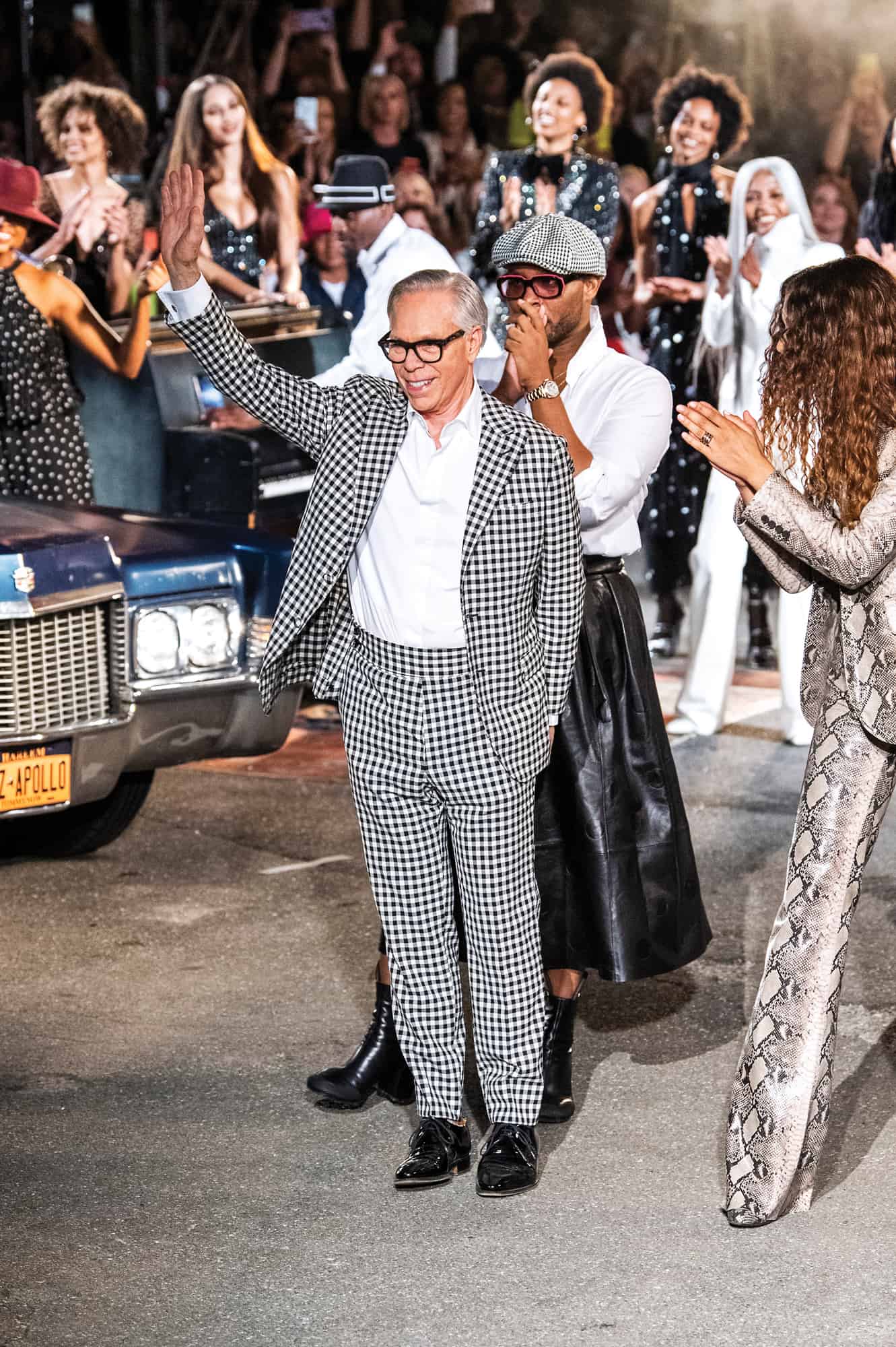
(Courtesy Tommy Hilfiger)
This has been a rough year for all of us. How have you been able to stay optimistic as a businessperson?
I’ve lived in a lot of the unknown and fear factor from mid-March until June, when I decided to shake it and put my energy into thinking about the future and engaging with the teams and rallying the troops. You can get caught up in being brought down by the negativity and watching too much news and becoming depressed. I wanted to put all my positive energy into being constructive.
What advice do you have for younger designers?
Pick a lane. Never give up. Pay attention to the business as well as the creative. Have the disposition and the motive to never give up. It’s so easy to run into roadblocks and obstacles along the way and give up and do something else.
Any plans to retire?
I think that’s giving up. I’m having too much fun.
I have amazing people around me who do the heavy lifting. I give them their creative freedom.
What do you think the secret to your success is?
Paying attention to consumers’ desires and fulfilling their needs from product to pricing and marketing. I’ve always thought that doing unique, fun, surprising marketing is part of it, but product is always king. You need great product.
How does Tommy Hilfiger want to be remembered?
As someone who cared about others, was generous, and charitable. We’re a generous organization. Beyond all the fashion success, I’d like to be remembered for caring about others and making a difference in the world. It’s much more important.
Happy anniversary, Tommy!
Thank you for all the support! We don’t take it lightly. I also want to add that it has been amazing to be part of the PVH family. Everything we bring to them, they completely support. I think that’s rare to have a parent company be so supportive.
Subscribe to our newsletter and follow us on Facebook and Instagram to stay up to date on all the latest fashion news and juicy industry gossip.


